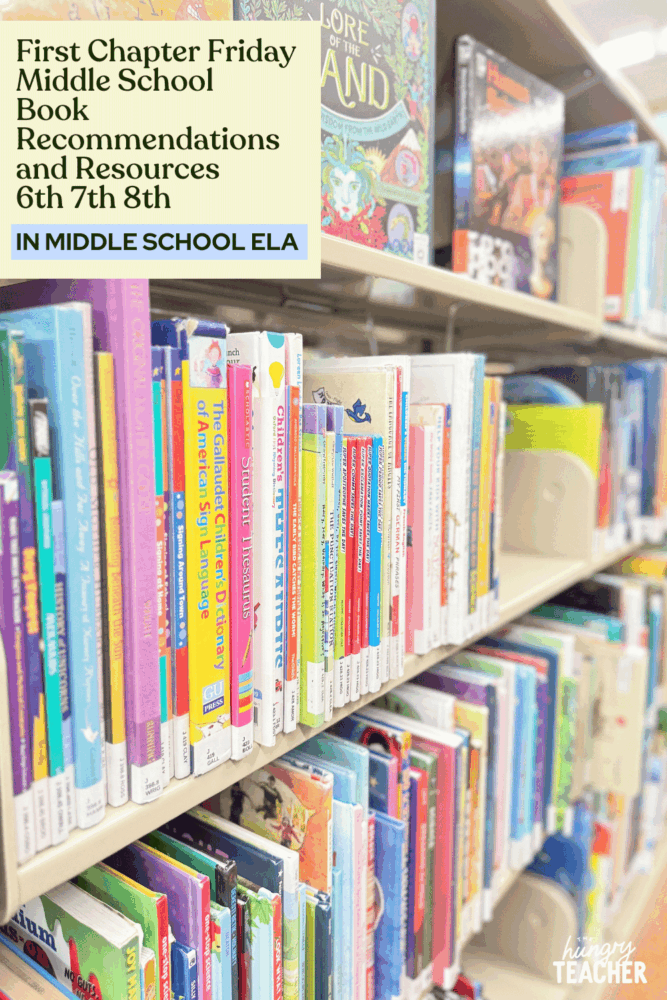hey friend!
I'm Martina.
I provide practical, time-saving strategies that actually work—so you can engage your students, teach effectively, and reclaim your time from the exhausting planning-grading cycle.
Browse Our ELA Resources
First Chapter Friday Middle School Book Recommendations and Resources |6th |7th | 8th |
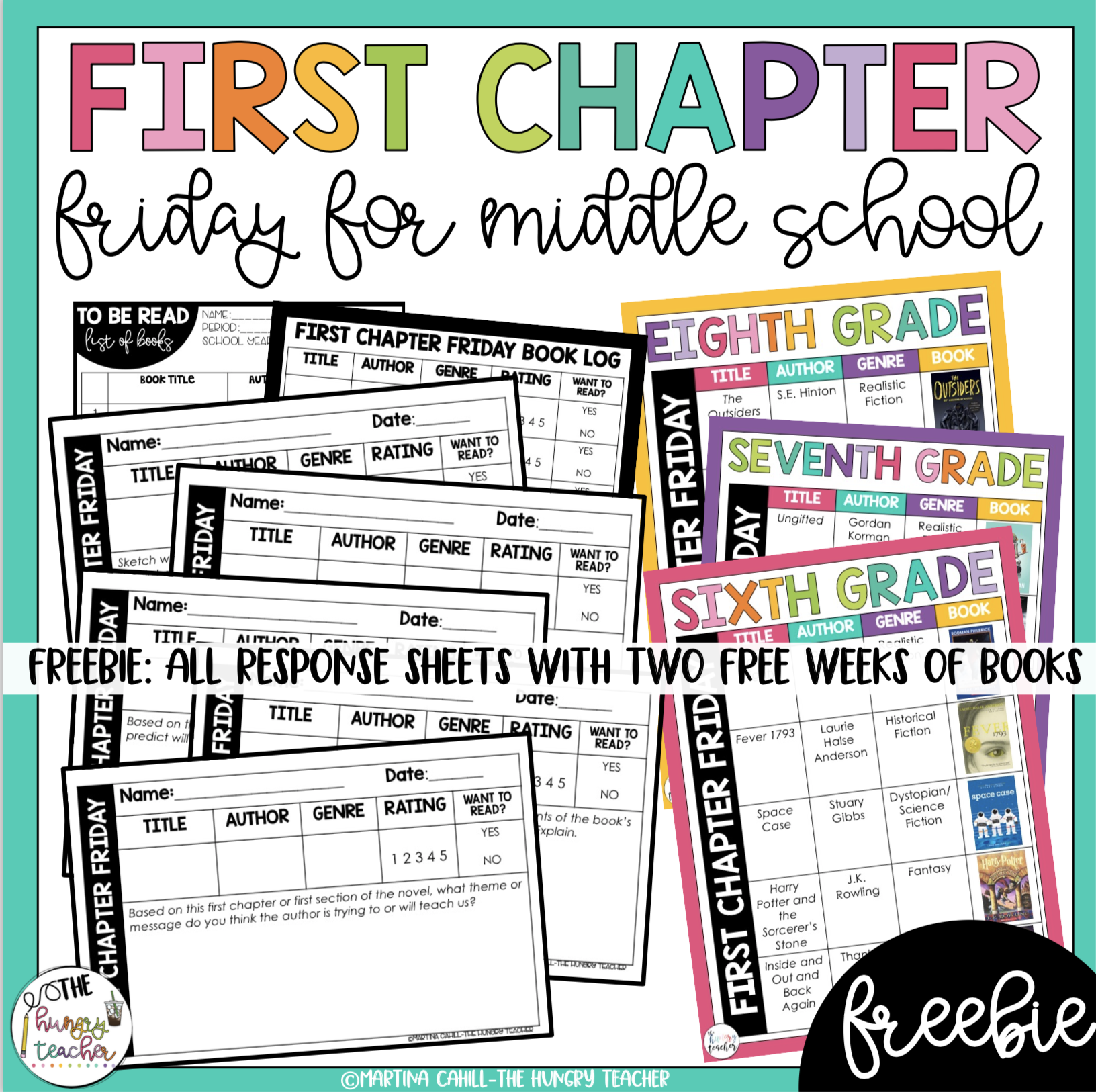
I just finished creating a resource designed specifically for middle schoolers and middle school teachers to utilize and then easily implement First Chapter Friday in their middle school ELA classrooms. Each grade level has forty different curated novels (120 in total) that are perfect for hooking your students into reading the book. They were picked with each specific grade in mind.
If you would like a free preview of each grade level, there is an exclusive Freebie created just for newsletter subscribers.

What is First Chapter Friday?
First Chapter Friday is simply a way to introduce students to books that they may not otherwise pick. You simply read the first chapter of a novel every Friday (or whatever day of the week you want). Then display the book or have a sign-up list or whatever you choose, so kids can read the books.
Click here or on the image below to be taken to the full resource.
Implementation ideas:
Every school, classroom, and book is going to be different. It may not be possible to read an entire chapter each time. Also, some books like The Maze Runner or the Holes have really short chapters and you might be able to read three or four of those chapters. In my class I just allot eight to ten minutes each time to read as far as I can get in that amount of time.
Just create a system that works. Whether it’s the first chapter, or just a set amount of time you will read the beginnings of books to them, the goal is to just continually try to expose them to a book they might want to read.
I find that students will look at the covers and decide it’s not for them. Or sometimes they will even read the synopsis of the books and determine prematurely it’s not for them. However, when they actually read or listen to someone read the beginning of books, they are much more likely to be hooked. That is the point of this method. Don’t get hung up on the amount of pages, chapters, or time. Just read the start of the books to them!
I have also included some forms for students to keep track of books they liked, books they want to read, or books they end up reading. It’s a good way for them to begin to see who they are as readers. 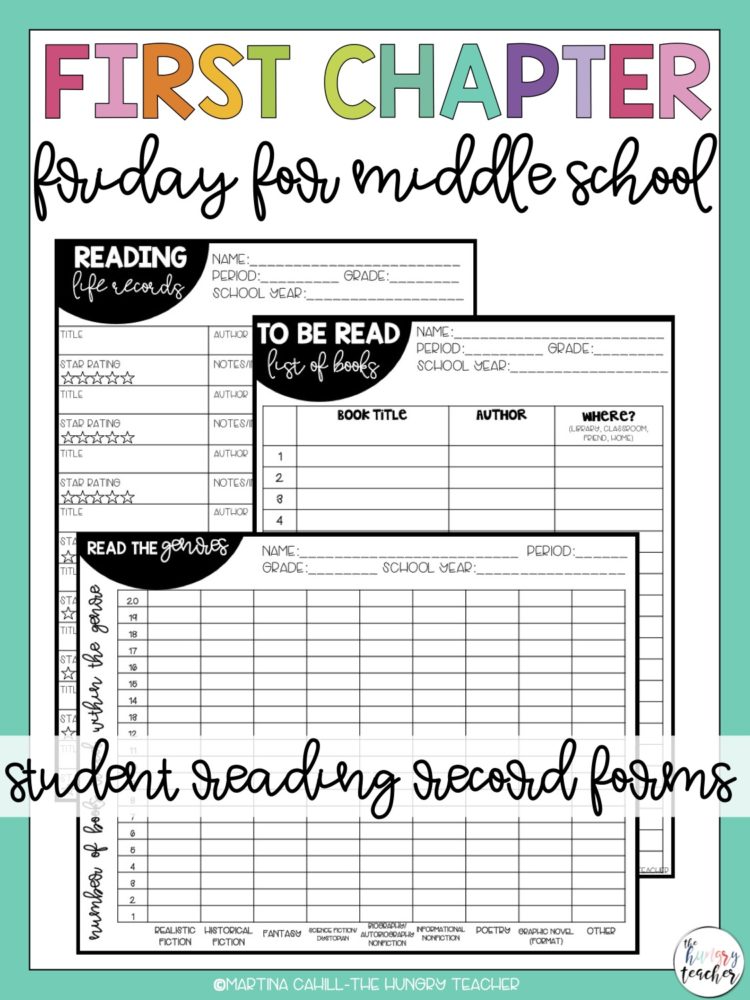 I also included just a few reflection forms, to guided students who need more structure as you are reading.
I also included just a few reflection forms, to guided students who need more structure as you are reading.
They are very simple half sheets that just encourage student to think about whether or not it would be a book they want to read.
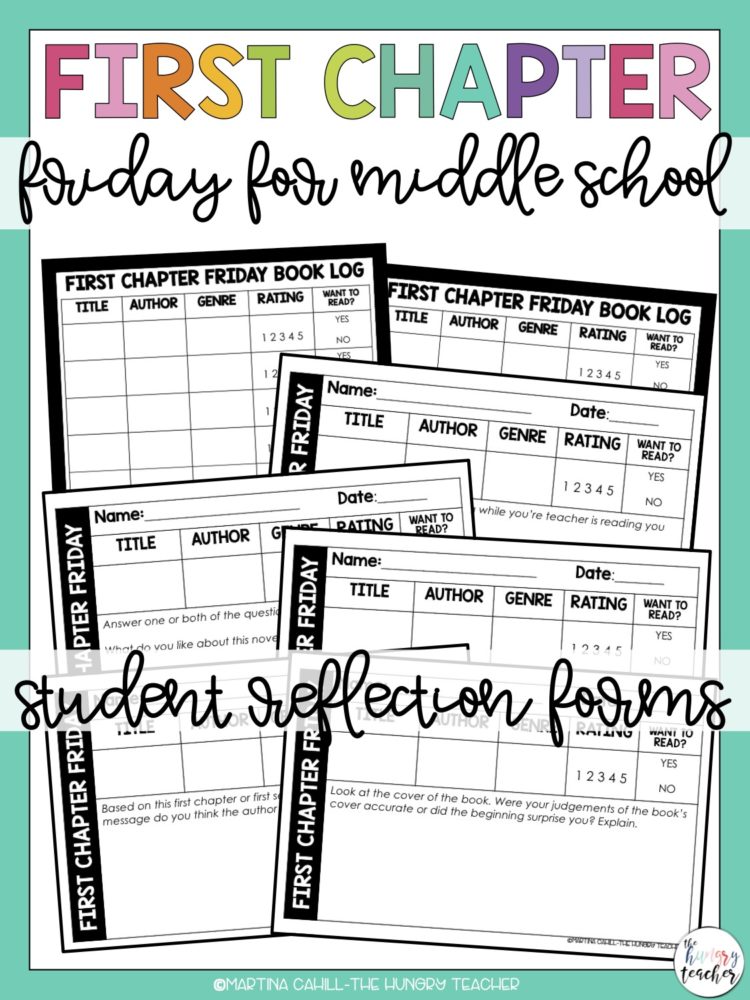
How were the books selected for each grade level?
I taught sixth grade ELA for one year, and have now taught seventh and eighth grade ELA for four years. I also have taught a sixth grade books and movies elective for the last four years.
Because of this I know there is a HUGE difference in these grade levels, especially when it comes to the novels they read. The lists are based on interests and content (level was not considered for any of the lists, because that’s not the purpose of this method).
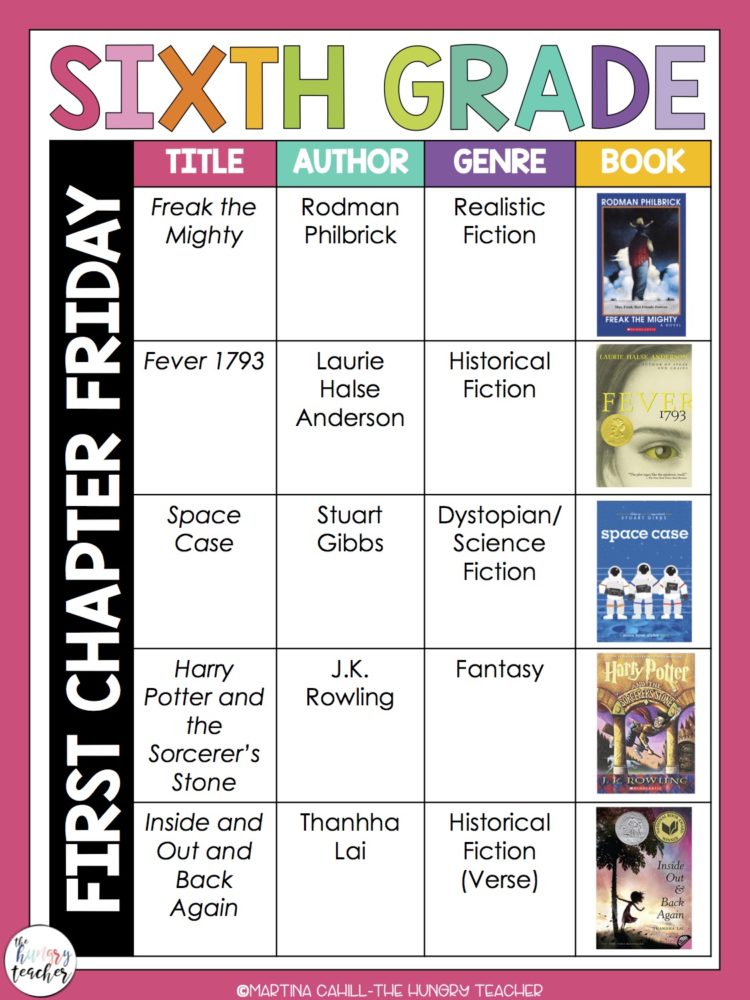
How were the genres decided? Why not more fantasy or dystopian?
The whole point of First Chapter Friday is to get kids interested in books that they might not otherwise read. I did try to vary the genres (realistic fiction, historical fiction, dystopian/science fiction, or fantasy) while also including some format variation (verse novels). Certain genres do have some limitations and I didn’t want to include different genres for the sake of it. I wanted to read the first chapters of these books to get my kids reading. This influenced the genres highlighted for each grade.
Dystopian novels tend to be most appropriate for eighth grade in terms of content. Because of that, more middle school dystopian novels are recommended in the eighth grade lists. Again, I didn’t try to force dystopian novels in the other grades. However, there are some recommendations when it made sense.
Fantasy novels present the opposite issue. Trying to get an eighth grader interested in the fantasy genre, who isn’t already interested in fantasy books, is honestly pretty difficult. In general, my eighth graders who will read middle grade fantasy will read just about anything. Plus, fantasy doesn’t usually even hook fantasy readers right away, so many first chapters don’t do fantasy books justice. Again, I included some of these titles when it made sense, and to vary the genres. But I didn’t force it so as to stay true to the purpose of this method.
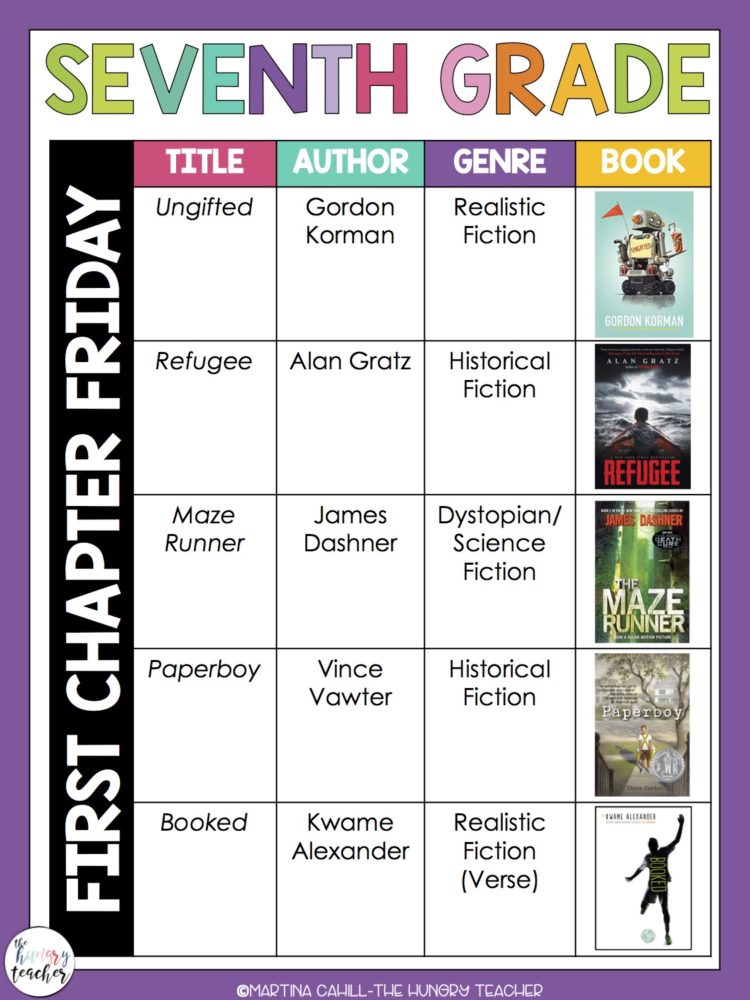
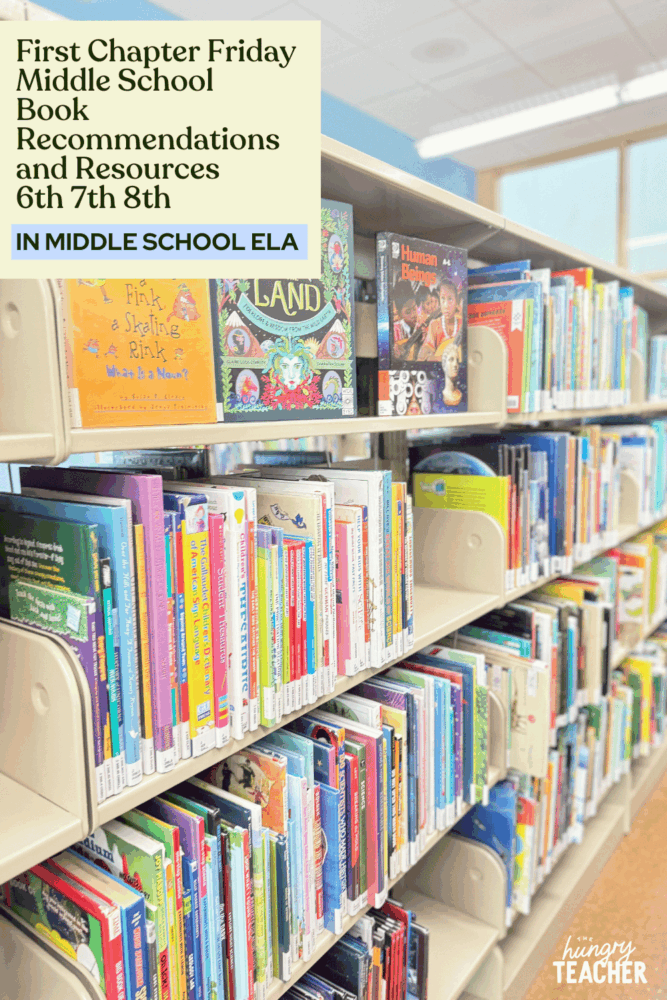
What else should I know about the different grade level lists?
I was pretty good about not putting young adult titles in the sixth and seventh grade lists. In eighth grade, I do treat them much more like high schoolers, and there are young adult titles. Most of these eighth grade recommendations are considered young adult. That’s mostly because of violence, but some do have references to and/or imply sexual content. I worked hard to stay away from young adult novels that have actual sex scenes in them. However, you could easily replace any of those titles with a sixth or seventh grade recommendation.
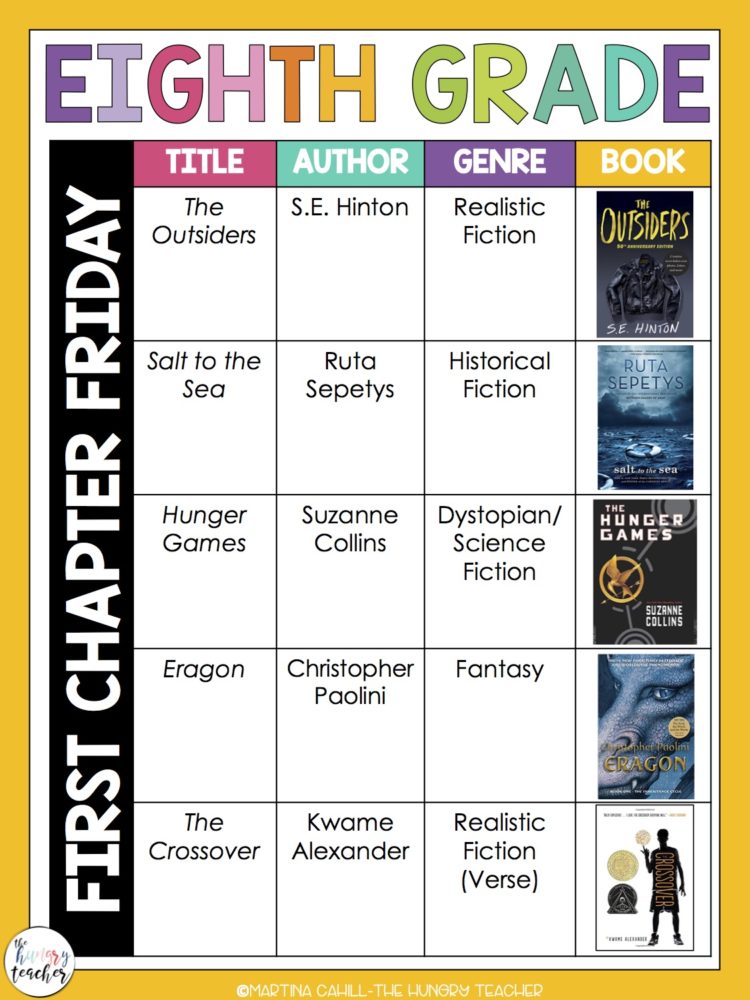
You can get the full resource right here on the The Hungry Teacher Website too!
Want a sneak peek at teaching The Hungry Teacher way—with support, structure, and strategy?
When you join the waitlist for The Hungry Teacher’s Hub membership, you get three free classroom-ready resources: a theme unit, an expository writing unit, and a grammar unit introducing mentor sentences. Plus, you’ll get immediate access to a selection of exclusives from the Hub, including editable sub plans, pacing guides, and more.
No strings attached. Just resources you can use right now—and a heads-up when the Hub opens.
3 Free Middle School ELA Units—yours to keep!
JOIN THE WAITLIST + A FREE GIFT
Where to next, line leader?
Welcome to The Hungry Teacher! We create resources that are easy to use, practical, and get results. Teach with confidence—and make it home before dinner.
xo, the hungry teacher

